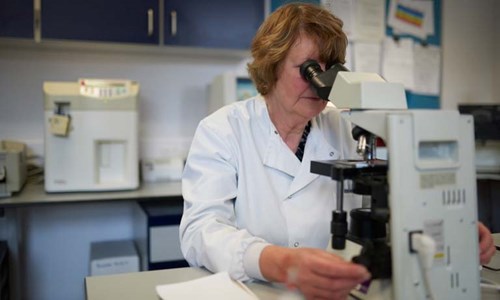Animal disease surveillance
What's the issue?
Vets across different areas of practice and research routinely contribute to the surveillance network to safeguard the UK’s animals, humans, and trade opportunities.
There are 2 types of veterinary surveillance:
- Statutory surveillance, which deals with the management of notifiable diseases, such as foot and mouth disease and rabies
- Scanning surveillance, which enables the early detection of new and re-emerging animal-related threats, such as Schmallenberg virus or Alabama Rot
Since 2014 a number of post-mortem facilities have been closed and many farm vets are concerned that the cuts to APHA services may affect vets’ and farmers’ access to laboratories. Farm vets are anxious to make sure that the UK's animal surveillance systems are maintained so that the UK has effective and adequately resourced systems for detecting new and emerging diseases in livestock.
Notifiable diseases in animals must be reported to government authorities even if you only suspect that an animal might be affected. The relevant authorities to report to are:
- APHA in England, Wales, and Scotland
- The nearest Divisional Veterinary Office in Northern Ireland
Surveillance doesn’t just cover farm animals and herd health, but spans equine, wildlife, and companion animals too. Animal health and disease monitoring has historically been strongly linked to the livestock sector but there are now increasing opportunities for vets across all species to contribute to scanning surveillance. These newer networks rely on vets across all species sharing the data and samples they collect in an appropriate manner.
If you collect data from farm animals, companion animals, equines, or wildlife use our guide to find out where and when to submit.

What's our view?
The UK veterinary surveillance network is vital to identifying and managing threats to public health, trade, and wider society from animal diseases.
Veterinary surveillance and animal health and disease monitoring is equally important across livestock, equine, wildlife, and companion animals.
Continued monitoring of new and emerging diseases through data collection, analysis, and sharing across species provides high-quality intelligence on animal health and welfare. This helps policymakers, veterinary professionals, and animal keepers to take decisions to improve animal health and welfare and productivity, as well as identify and manage threats to public health, trade, food quality, the environment, and leisure and tourism.
Read our blog post by BVA surveillance working group chair Kate Sharpe outlining the value vets can derive from contributing to animal health and disease monitoring.
We're calling on the UK governments and other key stakeholders to work collaboratively to modernise and optimise existing animal health and disease monitoring networks across livestock, equine, wildlife, and companion animals.
Our recommendations include:
- maintaining the current level of government resource spent on the scanning surveillance network;
- adopting new approaches to data collection and feedback, including incentivising the submission and sharing of data;
- optimising appropriate skills and expertise by reinforcing the role and status of Veterinary Investigation Officers across the UK;
- rethinking traditional approaches to funding and coordination;
- articulating the value of surveillance reporting to the veterinary profession to increase awareness and participation; and
- working collaboratively with stakeholders to explore innovative communication strategies.
BVA veterinary scanning surveillance policy position
BVA veterinary scanning surveillance policy position executive summary
Get involved
- Take action with our surveillance campaign.
- Watch and share our Veterinary View video to show how vets are a vital part of the surveillance network.
- Contact our policy team for more information.
More information
Government advice on notifiable diseases, including:
